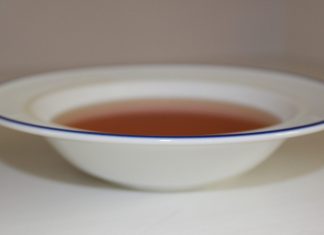Most people who have birds in their families want to provide the safest, most comfortable environment possible for their feathered friends. Bird experts often sing the praises (so to speak) of bird aviaries. A bird aviary is an alternative living space for a bird or group of birds, typically providing the bird with expanded space and a more natural and stimulating environment. Aviaries can be either indoor or outdoor. Indoor aviaries can vary from pre-purchased kits that you typically assemble yourself, to converting a bedroom in your home into a “bird room”, to a carve-out built within your main living space.
Recently, Wagbrag had the opportunity to sit down with Matt Smith, the Founder and Director of Project Perry – The Central Virginia Parrot Sanctuary, a non-profit organization dedicated to the rescue, rehabilitation, adoption and sanctuary of parrots living in captivity. We discussed the advantages of indoor bird aviaries, and how bird parents can get started building one – even with limited budgets or living space.
Q: Why should people who have birds consider building an indoor aviary, or a bird room?
A: What it basically boils down to is that aviaries provide more room for the bird. This is the biggest advantage of indoor aviaries. Some people feel a bit guilty about keeping a large bird in a cage. Others may recognize that birds require some flight and exercise, which is impossible when they are constantly confined to a cage. Some bird parents will let their birds free roam the house when they are at home, to give their birds an opportunity to exercise. However, this can prove very destructive to their homes. Birds generally will chew up the trim and the linoleum, and often will even put holes in the drywall. They get into anything and everything. Aviaries are a more comfortable alternative that still allows the bird to be a bird, while safeguarding your personal space and belongings. In a nutshell, indoor aviaries can be beneficial to both the birds AND the humans!
Q: Which is more common – indoor or outdoor aviaries?
A: Outdoor aviaries are really unique, so they are less common. Most bird people can’t do it themselves, and don’t have the money for it. Outdoor aviaries require a huge level of investment and expertise. They are great if you can do it, but not practical for most folks. In addition, outdoor aviaries require a different level of supervision of the birds, such as critter and predator protection. Some people also worry about their birds being disconnected from their house, since outdoor aviaries are usually built as separate entities from the main home. So, they have less control over what happens to their birds, and they may not have direct view of the aviary from their home. Theft can also be a concern.
Given these obstacles, I’ll focus my advice today on indoor aviaries and bird rooms.
Q: What do most people do today with their birds, in terms of living area?
A: Most people have jobs with the standard long hours, such as 8am – 5pm, and in order to keep their birds safe and their house protected, they cage them. Some will throw a lot of toys in the cage to keep them preoccupied. When they arrive home from work, they may give their birds some out-of-cage time in the evenings.
Most bird parents recognize the benefits of expanded indoor spaces for their birds, and many would like to create an indoor bird room or aviary, in theory. They know that it would provide more opportunities for exercise and stimulation of an environment that is outside the confines of a cage.
Cages are not always a bad thing. There are certain situations where you do need a cage for a bird. If the bird has a medical condition like arthritis, a big cage may make sense, because they likely cannot keep up with the healthier birds in a bird room. There is a place for cages in the bird world, and even Project Perry uses them on occasion – for temporary holding when we are waiting to re-home a bird, or if medical conditions warrant it. But we try to keep the doors open as much as we can, and we use free-standing stands or hoops.
Q: What types of birds would do well in an indoor aviary or bird room?
A: You can really build one for any kind of bird –from finches to macaws. Any bird would benefit from such an environment.
A couple of considerations should be kept in mind, however, when considering mixing birds in a bird room. Certain species, especially small birds, can coexist with each other just fine, such as Finches, Parakeets and Cockatiels, as long as they are given enough space in the aviary (however, I would not recommend doing this in a cage).
With larger birds, unless there is a cross-species bonding that has occurred, you may want to try to stick with same species populations in the bird room. This is because each species speaks a language that is somewhat unique to that particular species. This can help avoid confrontations, especially if a new species is introduced that does not understand the nuances of the other birds’ language. If you throw a different species into a mix (for example, a Cockatoo with several African Greys) they would not understand the communication. This could lead to the Cockatoo getting injured, not to mention that they are likely to be less happy overall. Think about it – if you were thrown into a different country where you were the only one who did not speak the language, wouldn’t you feel alienated? Besides the language barrier, mixing small and large birds can pose a safety issue. You don’t want Macaws with a smaller bird because the Macaws’ beaks are so massive, it would only take one swipe of that beak to kill a smaller bird.
Q: Let’s say I wanted to start on an indoor aviary or bird room. How can I get started? Does it have to be extensive (e.g. a whole room)?
A: The easiest option if you have an available bedroom would be to convert it into a bird room. You want to make sure that the room has a window or two. Avoid any rooms without windows, as you’ll want natural sunlight to light up the room. Stay away from basements if there are no windows. Sunrooms can work very nicely.
If you have limited space, it gets tougher – but you still have options. You can use 2 x 4’s to frame up a section of any spot within the living area of your house. For example, if you have a corner of the living room available, you can put up 2 x 4 framing and attach wire to it and basically create a room. By using wire, it’s not solid wall, so you don’t feel like you’re enclosing them off too much. The birds can still be a part of the flock and the household.
Q: What is the general level of investment required? Any options if you have a limited budget?
A: If you’re going to put up any walls using wire mesh, then the wire could be a big driver of cost, depending on what kind you use. The safest and best quality is stainless steel. Depending on the size of the area, the cost of the wire mesh can run in the hundreds for small area, or possibly even the thousands for larger area. An alternative to stainless steel is galvanized wire, which can also be used for indoor purposes.
If you are simply converting an existing bedroom, the cost will depend on the level of construction that you do. You may want to overlay the walls with wood planks to prevent the birds from chewing your existing drywall. The benefit of doing this is that it can be removed and replaced as it gets chewed up, or as you prepare the house for sale – you can just go back to your original walls by removing the wood planks. Any wood you use, however, should be untreated, as treated wood has chemicals which can be toxic to birds.
Regarding flooring, you can try keeping existing carpet, but it could eventually get chewed up or otherwise destroyed, so an alternative is install laminate wood flooring. Laminate would provide a strong, durable flooring option, as would tile. And much easier to clean!
So, to summarize, the main costs involved in building a bird room are covering the walls (unless you are OK with keeping drywall and getting it chewed), possibly changing the flooring if you have carpet, and creating fixtures for the birds. You can put in parrot stands or a branch coming from a stand on the floor, which you can buy pre-made or create yourself. You can hang hoops from the ceiling or put branches any way you want. Once you have the floor, walls and ceiling done and bird-proofed, you can really let your creativity flow, adding branches, toys, stands and hoops. It’s a fun project to design this cool environment for your birds.
Q: Is bigger better? What are the ideal dimensions vis a vis bird size?
A: This all depends on the type of bird you are housing. If you have an 8 foot x 8 foot room, you could keep a couple dozen parakeets in that room. If youhave macaws, you can probably only put a pair of macaws in that same room. It’s not a black and white formula – the most important thing is the dynamics of the flock. Most people have more than one bird, so they really need to tune into the dynamics between their birds. When you put more than two birds into any environment, it ups the potential for aggression and territorial behavior. You really need to know your birds and understand the dynamics between them, to eliminate any potential risks. Stress behaviors can occur if you overcrowd the room.
Q: If you’re not handy, who do you hire to build the space – a general contractor? A specialist?
A: You don’t really need a specialist, as these are mostly simple things we are discussing – basic carpentry framing methods for walls with mesh, or covering the wall of your room. If you are not handy, talk to a contractor or handyman that you can relay your special requirements to. Find someone who is patient and willing to listen to you, because it is a unique thing you are building, and your materials requirements may be a bit different than they are used to.
Q: Any final considerations or other things bird parents should know before they get started?
A: I’d also mention that bird rooms and indoor aviaries can help prevent the need for wing clipping. Many people advocate for wing clipping for safety reasons or to prevent escape. When you use a bird room or aviary, in lieu of letting your bird free roam the house, you add another level of protection – a secondary door. When the birds just free roam the house, they can escape from an open door or window. So, this is another benefit of having a bird room or indoor aviary.
New Aviaries at Project Perry
Project Perry is currently in the process of constructing three new aviaries – a Conure aviary, an Amazon Parrot aviary and an African grey aviary. Our current African Grey aviary is full, with 45 birds in it, so we need another one. Our Conure aviary will be really cool – we are adding a stream into it. It’s slated to be completed in the spring.
If you would like to help Project Perry by donating towards the construction of their new aviaries, visit Project Perry online. Any amount would be appreciated, and will directly help the organization care for more birds in need.
Photos: Courtesy Project Perry









